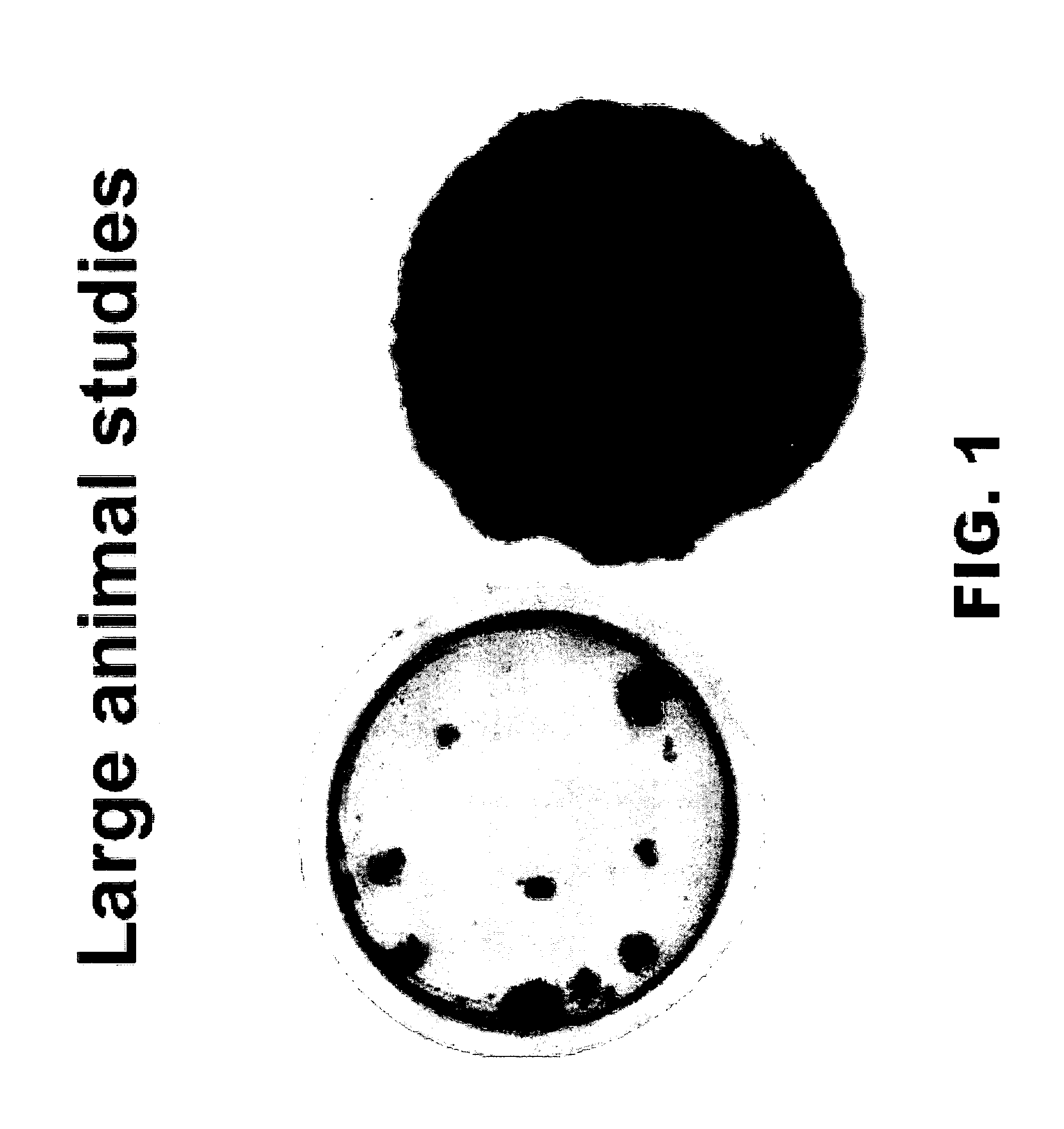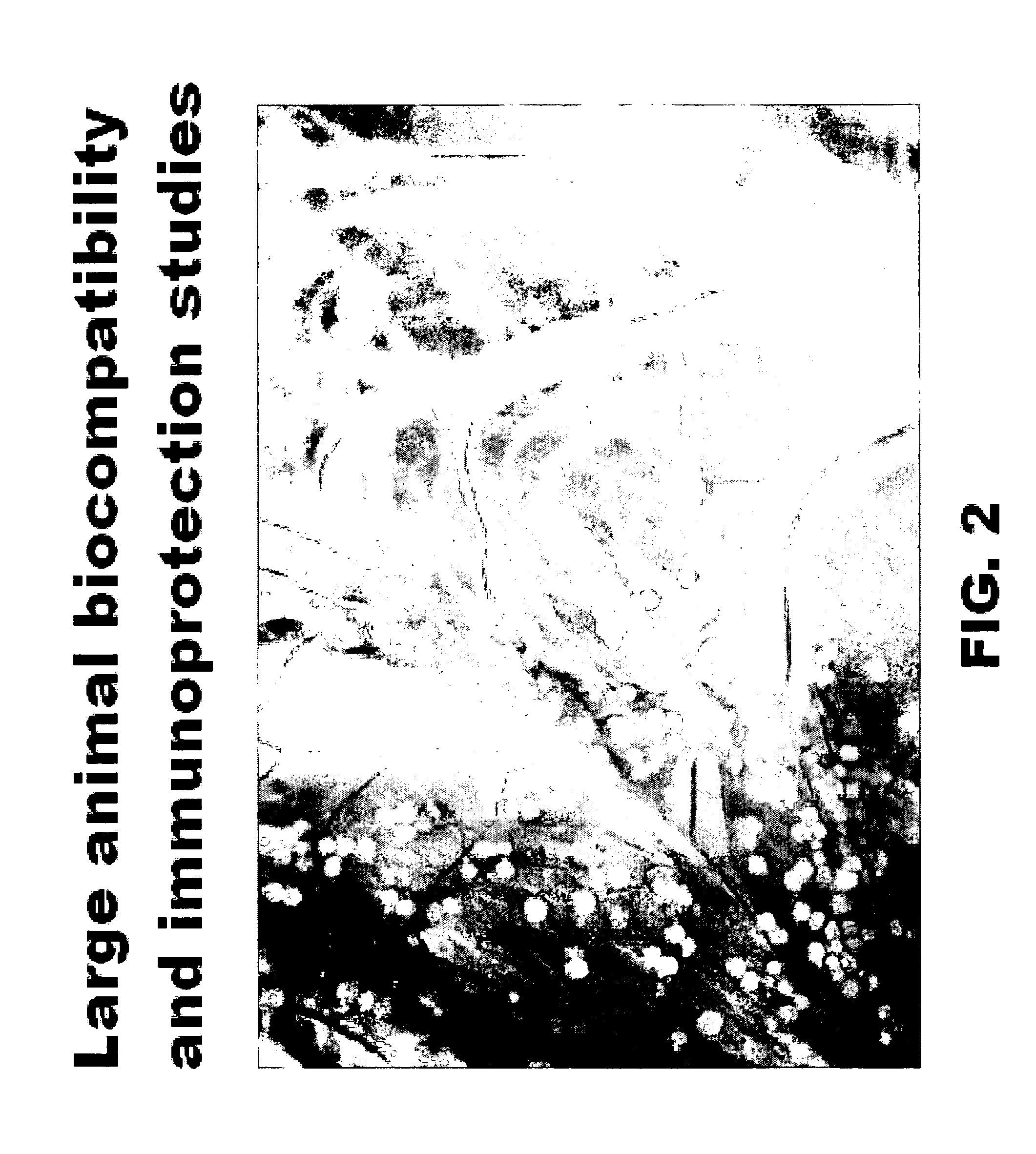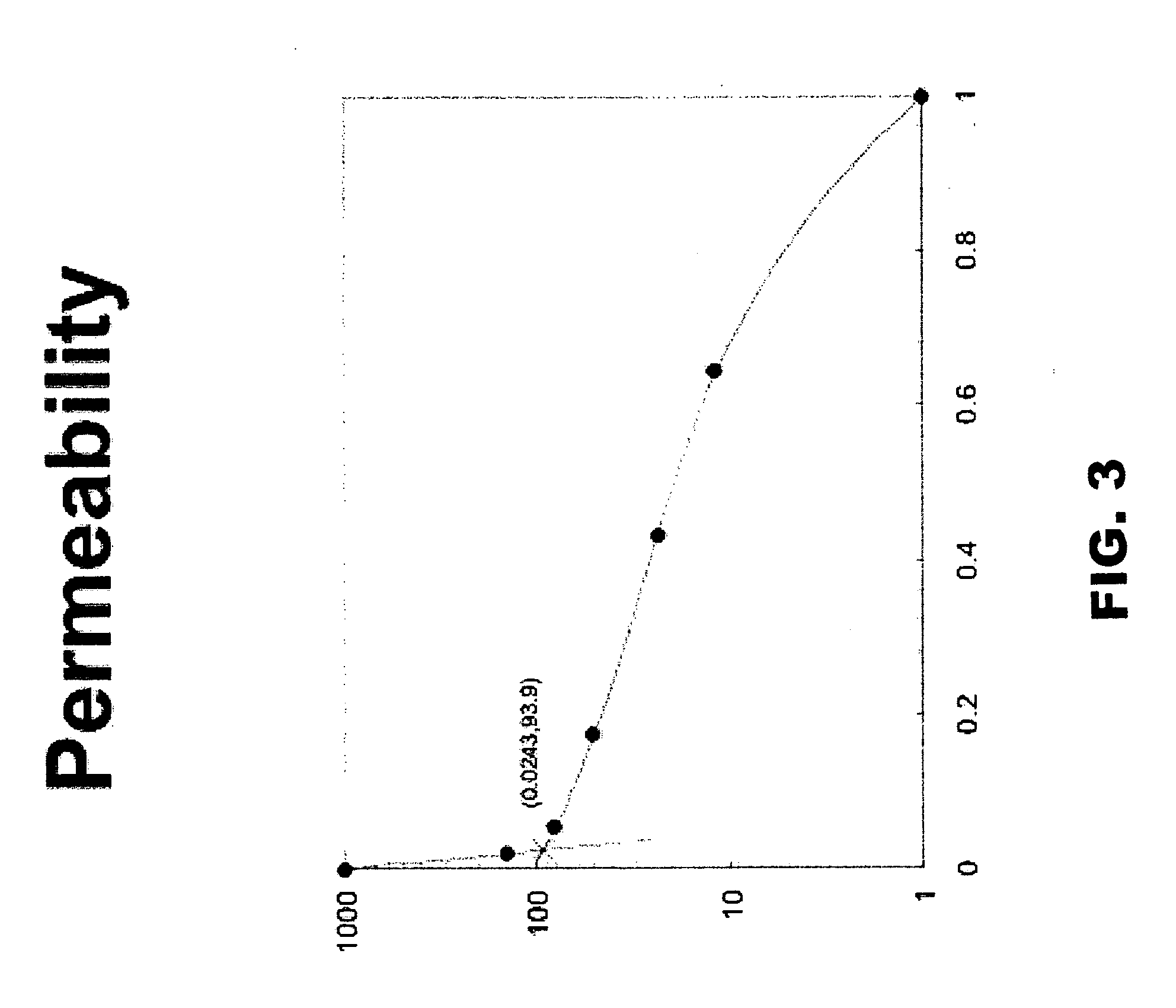Multi-membrane immunoisolation system for cellular transplant
a multi-membrane immunoisolation and cell transplant technology, applied in the direction of biocide, drug composition, metabolic disorder, etc., can solve the problems of preventing cellular transplantation from working effectively, diabetic nephropathy, retinopathy, neuropathy and cardiovascular disease,
- Summary
- Abstract
- Description
- Claims
- Application Information
AI Technical Summary
Benefits of technology
Problems solved by technology
Method used
Image
Examples
examples
[0075] Capsule Design: The following examples utilize a five-component / three-membrane capsule system. This system provides design flexibility to conduct systematic tradeoff studies to optimize capsule performance in large animals. The five components of the system are sodium alginate (SA), cellulose sulfate (CS), poly(methylene-co-guanidine) (PMCG), calcium chloride (CaCl2), and poly-L-Lysine (PLL). The inner membrane is the PMCG-CS / CACL2-Alginate (porosity of approximately 100 kDa, thickness of 20-40 micron); the middle membrane is a thin interwoven PMCG-CS / PLL-Alginate membrane (porosity of approximately 150 kDa, thickness of 1-3 micron); and the outer membrane is CaCl2 / Alginate (porosity of approximately 250 kDa, thickness of 100-300 micron).
[0076] Capsule Optimization: The following tests were performed to optimize the capsule. Because all the membranes should work together, it is difficult to predict how one membrane will affect another after the capsule has been fabricated. F...
PUM
 Login to View More
Login to View More Abstract
Description
Claims
Application Information
 Login to View More
Login to View More - R&D
- Intellectual Property
- Life Sciences
- Materials
- Tech Scout
- Unparalleled Data Quality
- Higher Quality Content
- 60% Fewer Hallucinations
Browse by: Latest US Patents, China's latest patents, Technical Efficacy Thesaurus, Application Domain, Technology Topic, Popular Technical Reports.
© 2025 PatSnap. All rights reserved.Legal|Privacy policy|Modern Slavery Act Transparency Statement|Sitemap|About US| Contact US: help@patsnap.com



